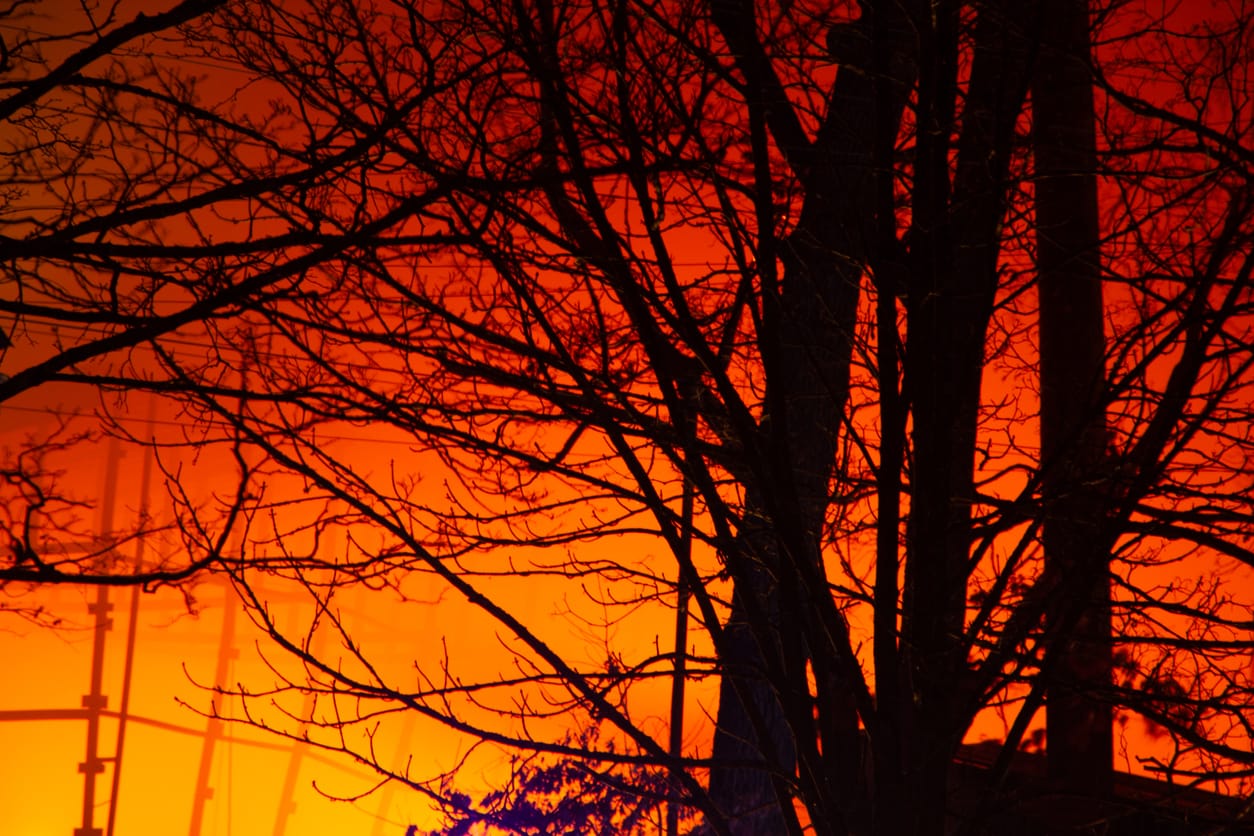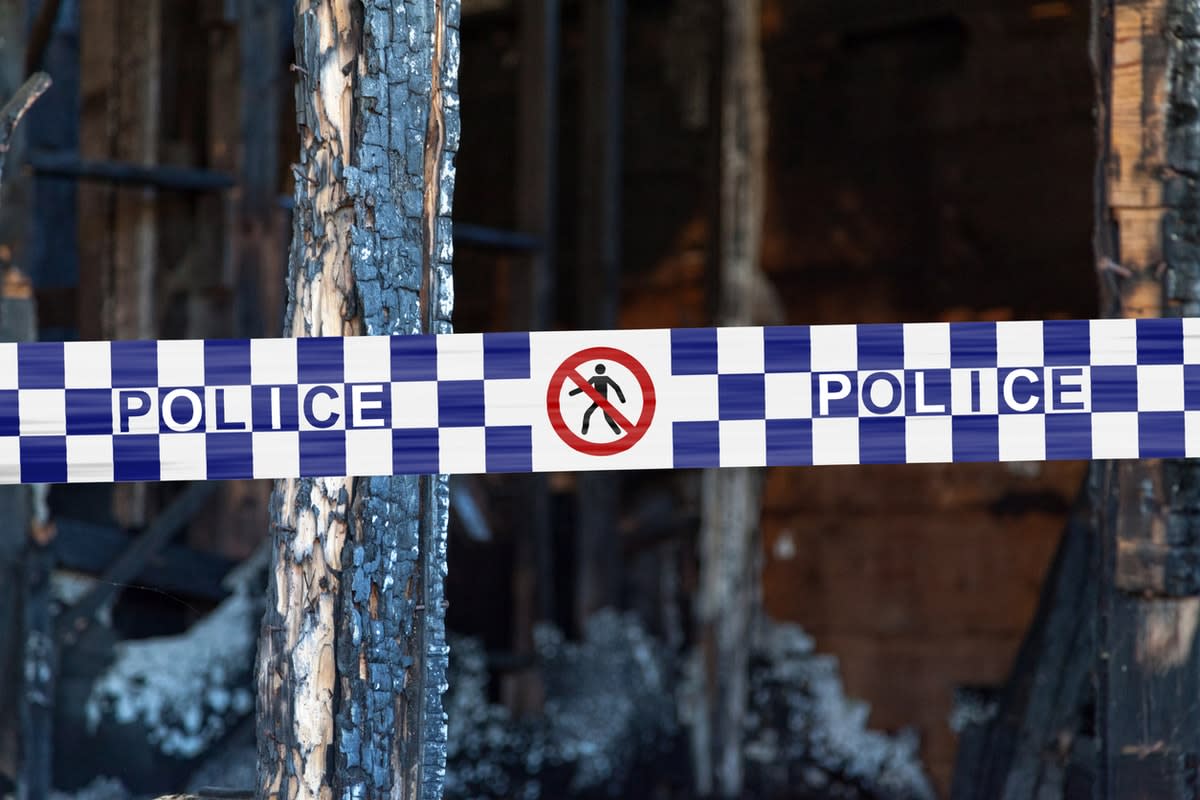
The fires devastating our communities on the eastern seaboard are covering more than a million hectares even before we reach summer. They are, as predicted, joining and growing into mega-fires.
Mega-fires create their own unpredictable internal weather systems; they can be as hot as a Bunsen burner at 100 metres, and they’ll overwhelm and engulf houses and suburbs. They’re deadly, and we’ll need help as emergency services are stretched to their limits, people are evacuated, and hospitals deal with deaths, burn victims and premature deaths from smoke inhalation.
These fires aren’t (yet) unprecedented in terms of size, but they’re most certainly unprecedented in terms of season.
The largest fire in Australia was Black Friday in 1939, double the size of our current fires. Ash Wednesday in 1983 was half the size, so too Black Saturday in 2009.
In 1983, a rust-red cloud of dust presaged the fires in Melbourne, just as it did for Sydney last week. The same happened in 2009.
The big difference is not size, but season. They were all at the height of summer, whereas the current fires started in spring.
Over the past few months we’ve had unsettling changes in the size and location of bushfires worldwide, among the most frightening those affecting us now. We’ve also had fires in the Amazon, Indonesia and the Siberian tundra (usually ice).
All in human hands
All, including our own, can be directly attributable to human behaviour in both direct and indirect ways. This means the power to control bushfires, and even prevent them, resides in our own hands. We aren’t helpless.
In part, the current fires in Australia come from drought, the influence of El Nino since late 2018, and recent westerlies from the negative Southern Annular Mode. These are localised effects on Australia from natural cycles.
On top of this, we have global, more long-term trends in climate, which is a different beast altogether. If the modelling for climate change is accurate, then human-induced climate change is already increasing fuel load, then drying it out, then altering weather patterns.
A paper released by Nature last year tested 10 separate models of natural trends and climate drivers since 1880 that predicted the post-1998 hiatus and converged on a hotter climate at least up to 2022, the likelihood of extreme temperatures rising 400 per cent.
Fires such as those in NSW and Queensland create a double-whammy for climate. They burn through natural terrestrial carbon sinks and pump out more emissions.
When it comes to ignition, only about 10 per cent come from natural causes; the rest in almost equal parts results from arson, suspected arson or recklessness.
If we take as an example a fire of comparable size – a blaze in British Columbia in 2015, covering about 1.2 million hectares – we can roughly estimate that the fires in Queensland and NSW have pumped out about 120 million tonnes of carbon emissions. This is greater than the combined emissions from every volcano worldwide, 110 million tonnes.
Apart from local weather and global climate, two main things are needed for wildfires – fuel and ignition. Fuel load is usually highest after periods of rapid growth and rain, followed by drying out.
Hazard reduction is a preventative measure that reduces fuel load. If carried out with sensitivity to habitat, it works well. This is an issue that distracts from another preventative measure related to ignition – deliberate and malicious arson.

When it comes to ignition, only about 10 per cent come from natural causes; the rest in almost equal parts results from arson, suspected arson or recklessness.
As expected, the fires in Queensland and NSW that started in September were caused by suspected arson, and recklessness. There were no lightning strikes on the worst days.
About half of all deliberate fires are lit by adolescents, 10 per cent female, following the age-crime curve that peaks across all crimes in this age group.
Read more: Early-season NSW 'catastrophic' bushfires are a sign of more to come over summer
Most are not truly malicious – they’re troubled, victims of child abuse and neglect, have cognitive and development issues, and chaotic families. Or it’s experimental fire-play gone wrong.
Most of them need better mental health and support services balanced with sensitive rehabilitation. The heavy hand of the judicial system is best reserved for the subset that are truly malicious; otherwise the result will be more fires from increased isolation, anger, helplessness and despair.
The sad truth is that most of these children come from communities that create conditions for the development of criminality, including arson, and that these communities are poor, marginalised to the outer suburbs – what’s often called the wildland-urban interface.
It’s a truism that 50 per cent of crime stems from 10 per cent of streets, which means community profiling can predict rising risk factors for arson.
Community involvement crucial
We also know community engagement is important.
Communities inherently suspect or have information that will lead to intervention. Schools, scoutmasters, sports coaches, doctors, family friends or even peers have a role to play.
Information can be shared with Crime Stoppers to feed into investigations.
In Victoria, volunteer work across government, health, education, firefighters, police and emergency services led to the world’s first integrated intervention program that directed fire-setting children into appropriate services. Sadly, it’s gathering dust due to lack of funding.
The average “pyromaniac” was previously thought to be 28 years old and sexually driven, but it turns out another group emerges from 40 onwards.
Their fascination with fire isn’t so much a psychosexual drive but another part of their broader criminal repertoire, often sparked by personal crisis, anger, bitterness, or stupidity. Sometimes they want to play the hero, often they want to damage the communities that reject them.
This group gets solid surveillance from police on hot days; their movements and activities are followed across other criminal activities, and some work is being done to fit them with GPS manacles that prevent them from entering vulnerable areas.
Other strategies
Beyond tackling fuel and ignition, there are other things we can do.
In Europe, firefighting agencies, military and police collaborate and share data across national borders. Western Australia is strong on data harmonisation and collaboration, as are Victorian groups such as the Gippsland Arson Prevention Program.
Here, industry works with environmental departments, police and firefighters. This involves forestry, whereas agricultural corporations could be involved in NSW and Queensland.
So many things could be done to save lives, property and wildlife. If the political will is there, we can prevent bushfires and not just leap into action during or after yet another disaster. We have the power to prevent bushfires in the following ways:
- Better resources and services to communities at the wildland-urban interface.
- Reduce economic inequity, support vulnerable youth in schools, clubs and primary care.
- Enhance case management at the interface of health, mental health and the justice system.
- More support for local community education via councils, media, firefighters.
- Integration and professional recognition across firefighting agencies.
- Data harmonisation across states for police, firefighting, industry and emergency services.
- Careful stewardship of natural habitats, controlled and targeted hazard reduction.
- Opening a sensible national dialogue around climate change adaptation and mitigation.
The key resides in “prevention” – an article of sensible policy that rarely gets enough funding, because politicians can rarely claim any obvious glory from something that might (thankfully) never happen.
Recent comments by Deputy Prime Minister Michael McCormack about “left-wing lunatics” aren’t at all helpful, and especially odd given that at least 60 per cent of his constituents in farming and agriculture are deeply concerned about changing seasons and bushfire risk.
If we’re to properly assess bushfire risk, Australia is long overdue for a very careful and sensible dialogue about climate change – not a politicised debate or screaming match between equally hysterical opponents on either side of politics, neither of which fully understand the science.
Dr Paul Read was a senior lecturer at Monash University at the time of writing this article.





